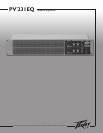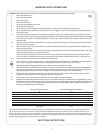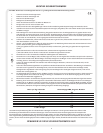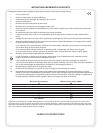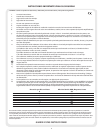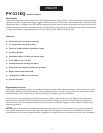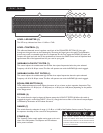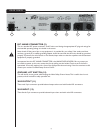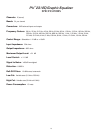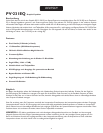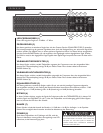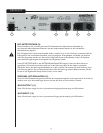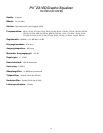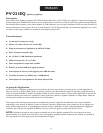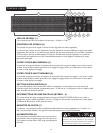
7
PV
®
231EQ Graphic Equalizer
Description
Thank you for purchasing a Peavey Electronics PV 231EQ graphic equalizer. The PV 231EQ is a dual-channel EQ incorporating Peavey’s
legendary low-noise, low-distortion design. Ruggedly constructed, the PV 231EQs have center-detented fader controls and offer
selectable ±6 dB or ±12 dB gain and an LED display indicating level. Other features include variable-state low-cut and high-cut filters,
XLR balanced inputs and outputs and bypass switches. PV 231EQ filters are set at ISO center frequencies within 3% accuracy. Whether
on stage, in the studio or simply tweaking your home hi-fi system, the PV 231EQ is the EQ for you.
Features
➡ Dual channel (31 bands each channel)
➡ 1/3 octave filter sets (ISO centers)
➡ 20 Hz to 20 kHz effective equalization range
➡ Constant Q filters
➡ Selectable 6 dB or 12 dB cut or boost range
➡ Level LEDs (-10 to +17 dB)
➡ Variable state low and high cut filters
➡ XLR inputs and outputs for balanced operation
➡ Bypass switch with status LED
➡ 10 dB boost /10 dB cut Level Control
➡ Ground lift switch
Equalization Process
Always begin the equalization process with all sliders at their center-detent (flat response) positions. Adjust the level up until the
unit begins to feed back, then lower each fader until the feedback frequency is found. Lower the faders in small amounts to avoid
adversely affecting sound quality. Likewise, excessive boosting of a frequency may result in feedback.
Exercise caution when attempting to boost frequencies below speaker system transducer cut-off. Typical sound reinforcement
enclosures are not designed for 20 Hz performance, and transducer damage could result from over-boosting low frequencies.
Excessive boost at very low frequencies could also limit overall system headroom. Engaging the low-cut filter is the best way to
avoid these problems.
NOTE: Superb tonality, absence of feedback and great-sounding systems may not be achievable with any graphic equalizer. All
other system components must be of high quality and designed for the application. No amount of equalization will correct an
acoustically bad room or bad microphone/speaker arrangement, or completely correct the response curve of a poor loudspeaker.
ENGLISH



